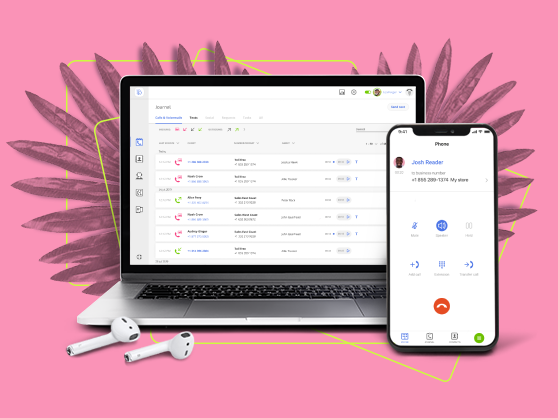When Mahatma Gandhi famously said, “Be the change you want to see in the world”, he probably wasn’t thinking about business. Yet any brilliant business idea is an exploration and an expansion of our worldview. And coincidentally, that’s what business – and business scaling in particular, is all about.
There comes a moment in the life of every entrepreneur, when we wonder – can I become something more? How can I expand, reach new audiences and grow using the resources I have and without draining my budget? And if so, what can I grow into?
If you’re also wondering how to change the world through your business vision, a scalable business model provides actionable means of answering those questions. Here’s your guide to taking that vision beyond the familiar horizon – complete with expert thoughts and practical insights on making it happen.
What Is a Scalable Business Model?
A scalable business model is often explained as “agile” or “flexible”. It’s a business operations approach that increases output and profits without largely increasing input. For example, when a business is able to grow sales volume and acquire new customers without expanding staff or investing into development and operations, the business model is scalable by definition.This approach is particularly suitable for online products and services.
Carlos Barros, Director of Marketing at EposNow comments on the capacities of a scalable business:
“With a good scalability model in place, businesses can easily and efficiently increase the number of transactions they process without having to hire extra employees. This saves the business time and money, and allows them to focus on expanding their operations.”
The Difference Between Growing and Scaling
Many an entrepreneur dreams about “growing” their business without draining the budget… and that’s exactly where “scaling” comes in. The difference between the two is in applying more resources into making more revenue versus making more revenue with the resources you already have. Looks like the latter is a great place to start, right?
As JOBM research notes, “For a business model to be truly scalable, it ought to hold the promise of exponential increasing returns to scale.” In other words, it’s not about investing 10% more to get 10% bigger ROI, but about investing 10% more to get at least double the ROI.
Think of it this way: you have 5 lb of apples. You can sell them for $12 total. Alternatively, with the same key ingredients and just a few extra ones you can make 5 apple pies and sell them for $10 each, making a total of $50. The extra investment is minimal but a smarter strategy generates more revenue.
Scaling Drivers
What are the main aspects of a business scalability model? Let’s take a look at something all growth-centric companies have in common:
- Flexibility – an online book store is easier to expand than a physical shop. A local repair shop is easier to take to another level than a large manufacturing facility. See the trend here? The bigger the operations and the more spread out – involving people, physical spaces, and organizational issues, the less flexible the environment and the more effort you must put into expansion.
- Automated workflows – when manual processes are automated on a day-to-day basis, entrepreneurs and teams can put more effort into key business tasks. More applied effort means faster growth, which means more ROI.
- Remote and hybrid work environments – For each employee that works remotely just 2-3 days a week, a company saves around $11,000 annually. Now think of it as the same money that you will invest into growth.
- Easy to replicate – Franchising models are simple to replicate since they don’t depend on unique factors or regulations. This makes them easy to set up and profitable.Your business doesn’t have to be a franchise, but you can build it around a model of simple replication. This is also the way many multipreneurs build their companies.
Scalability Dangers
What is a scalable business gone wrong? Companies that took the plunge without being prepared for fast expansion may notice the following issues:
- Decrease in quality – This may happen when companies fall head over heels for a new opportunity at the price of their current product or service. Always avoid loss of quality by balancing the input directed towards growth with upkeeping your product’s current strategy.
- Coordination issues – With business model scalability in action, your workflow coordination, including team communication, will shift as well. Think ahead of the dangers of poor coordination and address how you will adapt to change, including what team communication and delegation tools you’ll be using at this new level.
- Competitive risks – While it’s natural for entrepreneurs to think ahead, it’s impossible to predict the exact market outcome of how your business will react to scaling. After all, any venture implies a certain risk of failure, and entrepreneurs should research the competition before going into a new market or niche.
- Extra expenses – Scalability is primarily about the ROI you get out of the investments. While it does seek to minimize costs, it would be wrong to think that no expenses at all are involved. Entrepreneurs should be prepared that certain costs will be applicable in the initial stages of scaling, and project how they handle these costs.
Tips to Make Your Business Model Scalable
- Have a clear vision – Where exactly do you want to go? What do you want to achieve? How will expansion influence your current operations? Before you start, learn why you need it and the goal you’re trying to achieve.
- Make the model easy to manage – The simpler your business “ingredients” are to manage, the simpler they are to scale. For example, digital businesses have the most scalable aspects of business models. Conversely, the less your business depends on external resources, the less effort it demands to expand into something more. If you’re exploring business options, here are small business examples to look into.
- Focus on technology and automation – Time is our greatest asset, and automation turns lost time into profitable time. Automation can encompass all areas of business, including: communication (client, partner, and team), sales, development, production, and marketing. Cloud-based tools are doubtless preferable to software or hardware as they adapt to various business sizes and needs.
- Prepare a remote work environment – For each employee working remotely just part-time, a company saves about $11,000 per year. For full-time remote workers, that’s $22,000 in savings per employee. Moreover, when you can hire remote employees and contractors from all over the country or even world without losing productivity, you can keep your business running 24/7 while drastically cutting costs compared to in-house workers.
- Rethink marketing – How can you improve marketing outreach without large investments? Reanalyze your marketing strategy, preferably with expert help and build a roadmap that would include PR outreach, digital marketing, and social media marketing.
- Make the model easy to replicate – One of the staples of a scalable model is how easy it is to replicate, for example, in a different geographical environment or a different market. To take up the pie analogy again – how versatile are your business ingredients? How can you mix and match them to provide more value?
- Be prepared for change – Growing pains are a real thing, in business included. The first few months of incorporating a scalable business model, your team will face new responsibilities, learning processes, and workflow shifts. Plan ahead into how you will address challenges.
How MightyCall can help?
Effective communication, simple management, and workflow automation tools are key aspects of a scalable business model. They are also key aspects of MightyCall’s business phone system that offers a myriad of growth options for business communication.
- Grow with you – Our 30+ communications features for business make it possible for companies of any size to make their business model scalable without feeling like they’ve outgrown their business phone system. Connect as many local, toll-free, and vanity business numbers as you need, add extensions, users, and the features you need as you go.
- Automates routine work – Settings like IVR, auto-attendant, voicemail-to-text transcriptions, and automatic call recording automate communication with customers and partners, saving time on more important tasks.
- Organizes teamwork – When your business grows but your team stays the same in number, workflows need to be more organized than ever. Our system will help you delegate communications tasks, keep track of team activities, and diligently manage the influx of new customers.
- Integrate with other products – Sync your favorite digital tools with MightyCall and perform two actions in the time it took to carry out one. MightyCall integrates with the world’s top CRM platforms, allowing you to combine contact management with communications tasks. It also integrates with countless digital tools through Zapier.
Internal vs External Scalability of Business Model: What’s the Difference?
The difference between internal and external scalability is that of generating growth through the company’s internal resources and growth through expanding external resources. Pankaj Srivastava, Co-Founder & CEO of ClinicSpots, comments in more detail:
“Internal scaling refers to changes made within the company, such as expanding the business model, adding new resources or personnel, or increasing digitalization. The external [method] encompasses changes in the company’s values, business environment, or markets.
“Both have their own set of pros and cons. The internal [method] is often seen as less risky because it doesn’t require as much investment or change. However, it can also be more difficult to execute and may not lead to the same level of growth as external scaling. [The latter], while riskier, has the potential to lead to greater growth and expansion.”
Strategies to Scale Your Business Model
There are two main options when it comes to expanding business, called external and internal scalability. External scalability is taking your company to new markets, audiences, and investors. This process may involve more risk and investment, but, when carried out correctly, unleashes maximum growth potential. The internal method leverages existing company and team resources to do more. This is the easier and less risky method.
Internal Business Model Scalability
- Form a strong team – it’s not how large your team is but how well responsibilities are delegated and carried out. Make sure that communication is streamlined and all activities coordinated between team members, allowing you as an entrepreneur to focus on key tasks.
- Work with feedback – building an MVP business model (more on that below) and perfecting it through customer feedback is the fastest way to achieve internal scalability. Starting with a simple product/service version, you use the feedback loop to discover customer wants and make your brand more scalable.
- Automate routine tasks with digital tools – We’ve already talked about automation, and rethinking how you use technology is another great asset base. On the other hand, you may also consider the digital tools you currently use – how well do they integrate with each other, how comfortable is your team using them, what can you improve?
External Business Model Scalability
- Target new customers – When was the last time you updated your buyer persona? If it’s been a while, you should do so now. Research your current audience and think what yet non targeted groups can benefit from your product. Then a/b test your hypothesis with a new audience.
- Expand into new markets – To exponentially scale the business model, a company may enter a national or even international market, extend a branch of the product, cooperate with new partners, change manufacturing, development facilities, or form new business ties. Or it may be just as simple as giving your local shop an online presence.
- Build new bonds – Network and communicate in the area where you want to expand into. Are you exploring a new niche? Talk with entrepreneurs in that field. Looking to automate certain processes? Find out firsthand what digital tools helped businesses of your size and budget.
Patterns of a Scalable Business Model
“We started with one website, and now we have six. We cross-utilize resources, mainly
people, for all the sites, so our revenue has grown at a much faster pace than our expenses. That is essentially the definition of scaling and its benefit in a nutshell. We can grow our revenue and drastically improve our margins at the same time.” – Carolyn Young, Business Specialist, Step by Step Business
All scalability business models have key aspects in common. These patterns help them preserve funding for growth and vital operational aspects.
- Wide-scope distribution – think of new sales and marketing channels to target your product through, and how to attract new audiences. This can mean growing digitally, nationally, or even taking your company to an international level.
- Outsourced minor operations –give yourself the space to perform key operations that only you and trusted team members can perform. Other tasks can be transferred to a reliable outsourcing partner.
- Teaming up with partners and customers – turn partners and customers into enthusiastic promoters of your product. Create a loyalty program and rewards for active promoters.
- Merging efforts with B2B – create referral and affiliate programs for B2B. Think of the businesses that can complement yours, helping both of you double the revenue through partnership, not competition.
Components of Scaling Your Business Model
“Think about how decisions made as part of your business growth plan might impact you if you were a customer. They can become your strongest ambassadors and help in generating revenue if you anticipate their demands at every level of the process.” – Peter King, Co-Founder, Authority Builders
- Effective management – Organized workflows, clear communication, and automated teamwork ensure that your business is scalable and runs smoothly. If the company operates in more than one location or in both online and offline environments, building a consistent management model will streamline operations and enable effective growth.
- Cross-utilizing resources – Think back to the apples example: how can you create more “recipes” with the ingredients you’ve already got? By cross-utilizing resources and people, how can you offer new or better services? How can you update your product or service without rebuilding it from scratch? And what about approaching existing clients to help bring in new ones?
- Standardization protocols – A scalable business product or service should be built around a set of standards and metrics that act as its market shield. This doesn’t mean that your product should be “standard” as opposed to “unique”. What this means is that your organization applies and follows a smart, unified set of guidelines in its product/service development, sales, marketing, advertising, investing, commerce, and other business aspects.
Roadmap for Building a Scalable Business Model
To take your business to new places, grab a piece of paper and take time to consider the following aspects. Later, you may complement them with examples for developing a scalable business model in the section below.
1. Think in fixed costs vs. variable costs
Building scalable business models is about striking the balance between two types of costs that a business meets with and seeing how they impact or stall growth. Jessica Martin of Rockholder explains this method.
“The key to a scalable business idea is to have a small number of fixed costs and a large number of variable costs. Fixed costs are costs that don’t change as the business grows, such as office rent, employee salaries, and insurance. Variable costs are costs that scale with the business, such as materials, shipping, and customer service… This allows the business to [grow] quickly and efficiently, without sacrificing profitability.”
She remarks that subscription-based software-as-a-service (SaaS) businesses, such as Salesforce, Zoom, and Slack all have low fixed costs and high variable costs. That’s why they can quickly add new customers and scale their businesses without sacrificing profitability. This is the model that works best for digital businesses. On the other hand, franchise model companies like McDonald’s, 7-Eleven, and Ace Hardware have high fixed costs, but due to low variable costs they are able to keep the balance and profits.
2. Understand what works for you and answer the following questions
- How scalable is the business model I currently have? What can I change about it to foster growth?
- Who’s my role model/success story in the market/niche I want to expand into? Why do they excel at this niche? (List all the reasons you can think of. Ask your friends/relatives/colleagues for their opinions as well)
- How digitally optimized is my business currently? What automation aspects can I work on?
- Am I focusing just on increasing sales, or on beating the competition or expanding into new niches and markets?
- What steps can I take to leverage existing resources through affiliate marketing, partnership programs, and other cooperation with partners and customers?
- How competitive is the niche or market we’re expanding into? What is the value of entering it?
- What aspects of our business mindset do we need to change in order to attain scalability and facilitate entry into new markets and exponential growth?
- What aspects of business operations/workflows/organization need improvement?
- What’s our budget and how will we prioritize it?
- Are we staying focused on quality or just quantity? Is our customer service ready to handle an influx of new customers? How can we ensure that our service stays top notch?
3. Perform a reality check and map out implementation
When you’ve considered the questions above, organize them based on priority. For example, put your main focus and weakest spots at the top, and feel free to disregard issues that don’t apply. A great idea is to answer these questions with your team or a key group of employees. Brainstorming will open up new ideas, help you perform a collective reality check, and map out the fastest implementation route.
Scalable Business Model Examples
Let’s take a look at the three most popular scalability models in practice. These are particularly well suited for the online business industry, but with certain modifications can be applied to any company.
MVP model
A Minimum Viable Product (MVP) is the bare bones model of a product or service that’s preparing for rollout. This may not sound as exciting as a fully customized model, but if you’re preparing for expansion, an MVP model provides the least investment with the prospect of utilizing the feedback loop for each further upgrade.
The philosophy behind MVP models is simple: offer more when people ask you for more. Not earlier.
Example of a scalable MVP model: Amazon
You may know that Jeff Bezos, one of the world’s richest people, started Amazon as a simple … online bookstore. He bought the books from distributors and shipped them to customers via his online store. When he saw the store becoming more popular, he gradually stocked up on other goods, in addition to the books (see the scalability model in action already?). Over time, more and more merchants started adding their products. What started as a very simple enterprise ended up as the world’s leading marketplace – all via feedback and demand. There you have it: a classic MVP example.
Freemium model
Another inherently scalable business model example is the freemium product model. This is a model where a product or service has several pricing tiers, one of which is a free product version. Usually, the free option is a basic trial of the product – it provides limited functionality. Some of today’s most popular digital products including Skype, Dropbox, WordPress, Trello, etc. either started out as freemium or offer it to this day.
The philosophy behind a freemium model is a hook: knowing they’ve got no money to lose, people willingly try the free option and then upgrade.
Example of a freemium model: HubSpot
One of the most popular CRM systems, HubSpot still offers a free plan. Standing in wide contrast to the much more expensive options, it acts as an introduction to HubSpot or as free onboarding. Then, once businesses see how easy it is and need CRM features not included in the free plan, voila! HubSpot is here with their exceptional paid plans. Offering a free basic product version is a simple way to make a business model scalable since it doesn’t cost much investment, time, or effort – you just downgrade your “standard” version and offer it as a separate option, leading to an influx of new customers and greater market visibility.
The sharing economy model
The sharing economy model scales effectively because it leverages human to human interactions to increase revenue. Whether it’s building your partnership network or finding new, experiential ways to engage customers, it’s built around connection. This model can also be combined with others, for example with the marketplace model. It can include commissions, membership/subscription fees, fee-based loyalty programs, listing fees, fees for advertisements/publishing/reviews.
The philosophy behind the sharing economy model is to generate revenue through building a wide partnership network with customers and partners and earn commissions from providing services.
Example of the sharing economy model: Airbnb
What was to become the world’s hospitality industry disruptor, Airbnb, started as a hustle to help roommates Joe Gebbia and Brian Chesky pay for their San Francisco rent. Ahead of a large design conference that had most hotels booked, the guys decided to advertise their loft with air mattresses, a working desk, and breakfast included. From there, the business turned into a marketplace model, with the website earning commissions from the sealed deals. However, the scaling didn’t stop at that – in recent years the company added “Airbnb Experiences” in addition to lodging– a new way of looking at travel by connecting locals with tourists in tours, masterclasses, and other cultural experiences. It didn’t take a lot of money to create “Airbnb Experiences” – the people did all the work themselves and the website just earned more commissions. A great example of the sharing economy at work.
A Scalable Business Model Is a Long-Haul Investment
Scalability isn’t a quick fix – it’s a daily investment into variable aspects of your business, it’s frequent a/b testing to know the difference between your projected audience and your factual audience, it’s staying agile to new market opportunities.
Most importantly, scaling your business model is about forming a clear vision of who you want to become, drawing a plan of how you will get there, and taking a fresh look at the human resources and digital resources to make it happen. See a new opportunity, niche, or market? Be curious enough to experience it and you never know where that experience will take you.



















